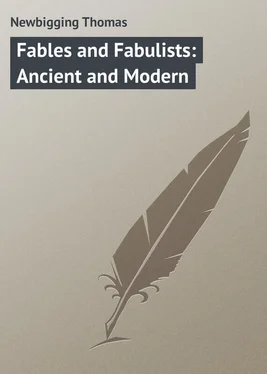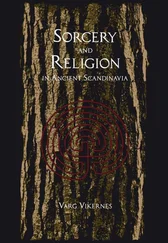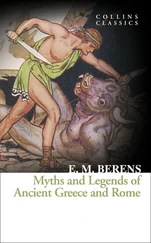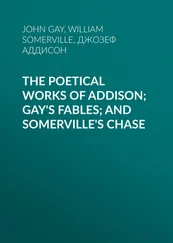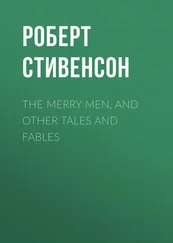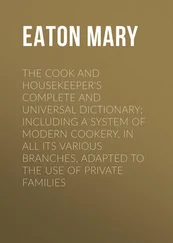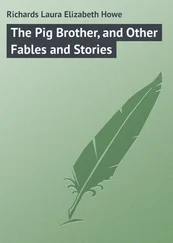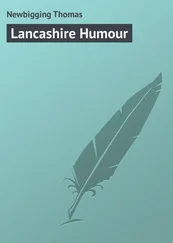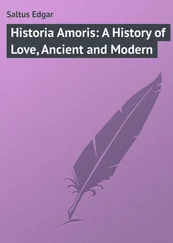Thomas Newbigging - Fables and Fabulists - Ancient and Modern
Здесь есть возможность читать онлайн «Thomas Newbigging - Fables and Fabulists - Ancient and Modern» — ознакомительный отрывок электронной книги совершенно бесплатно, а после прочтения отрывка купить полную версию. В некоторых случаях можно слушать аудио, скачать через торрент в формате fb2 и присутствует краткое содержание. Жанр: foreign_prose, на английском языке. Описание произведения, (предисловие) а так же отзывы посетителей доступны на портале библиотеки ЛибКат.
- Название:Fables and Fabulists: Ancient and Modern
- Автор:
- Жанр:
- Год:неизвестен
- ISBN:нет данных
- Рейтинг книги:5 / 5. Голосов: 1
-
Избранное:Добавить в избранное
- Отзывы:
-
Ваша оценка:
- 100
- 1
- 2
- 3
- 4
- 5
Fables and Fabulists: Ancient and Modern: краткое содержание, описание и аннотация
Предлагаем к чтению аннотацию, описание, краткое содержание или предисловие (зависит от того, что написал сам автор книги «Fables and Fabulists: Ancient and Modern»). Если вы не нашли необходимую информацию о книге — напишите в комментариях, мы постараемся отыскать её.
Fables and Fabulists: Ancient and Modern — читать онлайн ознакомительный отрывок
Ниже представлен текст книги, разбитый по страницам. Система сохранения места последней прочитанной страницы, позволяет с удобством читать онлайн бесплатно книгу «Fables and Fabulists: Ancient and Modern», без необходимости каждый раз заново искать на чём Вы остановились. Поставьте закладку, и сможете в любой момент перейти на страницу, на которой закончили чтение.
Интервал:
Закладка:
Not only was Æsop unfortunate in his death: his personal appearance has suffered disparagement. The most trustworthy chroniclers in ancient times describe him as a man of good appearance, and even of a pleasing cast of countenance; whereas in later years he has been portrayed both by writers and in pictures as deformed in body and repellent in features. Stobæus, it is true, who lived in the fifth century A.D., had written disparagingly of 'the air of Æsop's countenance,' representing the fabulist as a man of sour visage, and intractable, but he goes no farther than that.
It is to Maximus Planudes, a Constantinople monk of the fourteenth century, nearly two thousand years after the time of Æsop, that the burlesque of the great fabulist is due. Planudes appears to have collected all the stories regarding Æsop current during the Middle Ages, and strung them together as an authentic history. Through ignorance, or by intention, he also confounded the Oriental fabulist, Locman, 22 22 Spelt variously Locman, Lôqman, Lokman.
with Æsop, and clothed the latter in all the admitted deformities of the other. He affirmed him as having been flat-faced, hunch-backed, jolt-headed, blubber-lipped, big-bellied, baker-legged, his body crooked all over, and his complexion of a swarthy hue. Even in recent years, accepting the description of the monk, Æsop has been thus depicted in the frontispiece to his fables. This writer is untrustworthy in other respects, for in his pretended life of the sage he makes him speak of persons who did not exist, and of events that did not occur for eighty to two hundred years after his death.
That the story of Æsop's hideous deformity is untrue is clear from evidence that is on record. Admitted that this evidence is chiefly of a negative kind, it is sufficiently strong to refute the statements of the monk. In the first place, Planudes, as we have seen, is an untrustworthy chronicler in other respects, and an account of Æsop, written after the lapse of two thousand years, could only be worthy of credence issuing from a truthful pen, and based on documentary or other unquestionable evidence. Of such evidence the Constantinople monk had probably none.
Again, it is related that during the years of his slavery Æsop had as mate, or wife, the beautiful Rhodope, 23 23 This woman is notorious in history as a courtesan who essayed to compound for her sins by votive offerings to the temple at Delphi. She is also said to have built the Lesser Pyramid out of her accumulated riches, but this is denied by Herodotus, who claims for the structure a more ancient and less discreditable foundation, being the work, as he asserts, of Mycerinus, King of Egypt (Herod., ii. 134).
also a slave – an unlikely circumstance, assuming him to have been as repulsive in bodily appearance as has been asserted. At all events, any incongruous association of this kind would have been remarked and commented on by earlier writers.
Further, none of Æsop's contemporaries, nor any writers that immediately followed him, make mention of his alleged deformities. On the contrary, the Athenians, about two hundred years after his death, in order to perpetuate his memory and appearance, commissioned the celebrated sculptor Lysippus to produce a statue of Æsop, and this they erected in a prominent position in front of those of the seven sages, 'because,' says Phædrus, 24 24 Phædrus, Epilogue, book ii.
'their severe manner did not persuade, while the jesting of Æsop pleased and instructed at the same time.' It is improbable that the figure of a man monstrously deformed as Æsop is said to have been would have proved acceptable to the severe taste of the Greek mind. An epigram of Agathia, of which the following is a translation, 25 25 Boothby, Preface, p. xxxiv.
Конец ознакомительного фрагмента.
Текст предоставлен ООО «ЛитРес».
Прочитайте эту книгу целиком, купив полную легальную версию на ЛитРес.
Безопасно оплатить книгу можно банковской картой Visa, MasterCard, Maestro, со счета мобильного телефона, с платежного терминала, в салоне МТС или Связной, через PayPal, WebMoney, Яндекс.Деньги, QIWI Кошелек, бонусными картами или другим удобным Вам способом.
1
'Plato and Platonism,' by Walter Pater. London: Macmillan and Co., 1893, p. 225.
2
Aphthonius flourished at Antioch, at what time is uncertain. Forty of his Æsopian fables, with a Latin version by Kimedoncius, were printed from a MS. in the Palatine Library at the beginning of the seventeenth century. 'The Æsopian Fable,' by Sir Brooke Boothby, Bart. Edinburgh: Constable and Co., 1809. Preface, p. xxxi.
3
'Even trees speak, not only wild beasts.' – Phædrus, Book i., Prologue.
4
'Essay on Fable.'
5
'Fables Original and Selected,' by G. Moir Bussey. London: Willoughby and Co., 1842.
6
'The Fables of Æsop,' as first printed by William Caxton in 1484. London: David Nutt, 1889, vol. i., p. 204.
7
'The Tatler,' No. 147, vol. iii., p. 205.
8
2 Samuel xii. 1-7.
9
Quoted from James's 'Fables of Æsop.' Murray, 1848.
10
Preface, 'Fables,' 1668.
11
'History of the Æsopic Fable,' p. 148.
12
Essay: 'Of Books.'
13
Boothby's translation.
14
G. Moir Bussey: Introduction to 'Fables.'
15
'Essay on Fable.'
16
Swift: Preface to 'The Battle of the Books.'
17
'Institutes of Oratory,' book i., chap. ix.
18
'Pairing Time Anticipated.'
19
Suidas.
20
The mina was twelve ounces, or a sum estimated as equal to £3 15s. English.
21
See post , p. 76 Конец ознакомительного фрагмента. Текст предоставлен ООО «ЛитРес». Прочитайте эту книгу целиком, купив полную легальную версию на ЛитРес. Безопасно оплатить книгу можно банковской картой Visa, MasterCard, Maestro, со счета мобильного телефона, с платежного терминала, в салоне МТС или Связной, через PayPal, WebMoney, Яндекс.Деньги, QIWI Кошелек, бонусными картами или другим удобным Вам способом.
.
22
Spelt variously Locman, Lôqman, Lokman.
23
This woman is notorious in history as a courtesan who essayed to compound for her sins by votive offerings to the temple at Delphi. She is also said to have built the Lesser Pyramid out of her accumulated riches, but this is denied by Herodotus, who claims for the structure a more ancient and less discreditable foundation, being the work, as he asserts, of Mycerinus, King of Egypt (Herod., ii. 134).
Читать дальшеИнтервал:
Закладка:
Похожие книги на «Fables and Fabulists: Ancient and Modern»
Представляем Вашему вниманию похожие книги на «Fables and Fabulists: Ancient and Modern» списком для выбора. Мы отобрали схожую по названию и смыслу литературу в надежде предоставить читателям больше вариантов отыскать новые, интересные, ещё непрочитанные произведения.
Обсуждение, отзывы о книге «Fables and Fabulists: Ancient and Modern» и просто собственные мнения читателей. Оставьте ваши комментарии, напишите, что Вы думаете о произведении, его смысле или главных героях. Укажите что конкретно понравилось, а что нет, и почему Вы так считаете.
